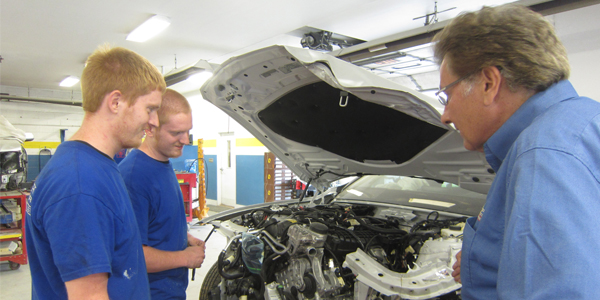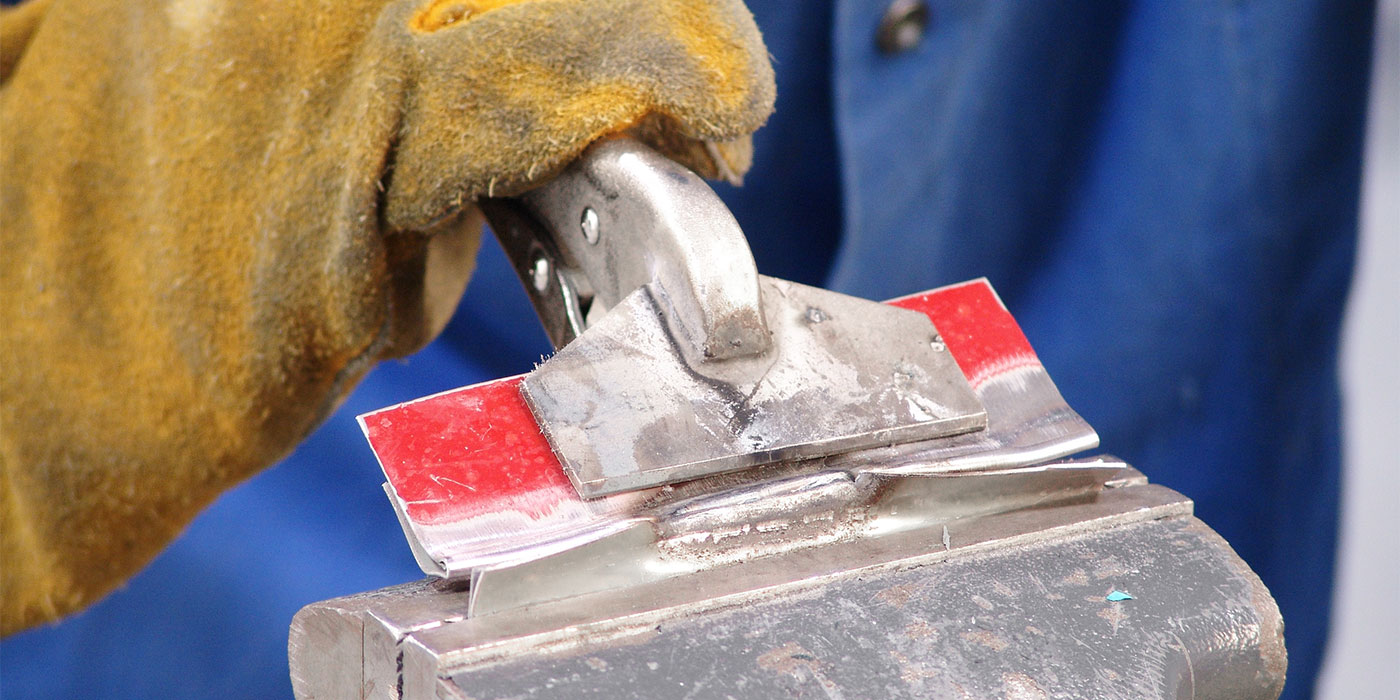
In many industries today, there is a shortage of people to hire. This is a good thing for the economy, but not for companies that want to hire.
At a Crossroads
The auto body industry is at a crossroads. The number of technicians coming into the industry is less than the number who will be leaving. Therefore, taking care of the employees you currently have and also protecting future employees is a smart strategy. Replacing or losing employees can be costly.
Losing somebody to a preventable medical issue or injury is a shame. Nobody ever wants to hear about a workers comp issue, something auto body shops fear greatly. Losing an estimator or technician can be devastating to the whole shop. In the body shop industry, we see all of our people working harder and sometimes longer hours to meet delivery times. Shops are full of cars, and people are stressed. I’ve never seen this industry as stressed out as it is now. I always seem to be waiting for the bomb to drop.
Ergonomics
Ergonomics not only addresses comfort and safety in performing various tasks but also proficiency. Establishing a workplace that is proficient and flows smoothly with less friction is something we do for the sake of cycle time. We want the work to flow smoothly from station to station and not have any problems. Creating an ergonomic workplace leads to a more productive workplace. By reducing the fatigue and stress of work, employees become more productive. Work is not dreaded anymore as there is less workload stress.
Fatigue in shops is a major concern. The more repetitive movements we do for longer times, the more our bodies react. The reaction becomes a minor issue at first but can become almost crippling later. An example would be the truck driver driving on a seat that does not conform to his body and becomes uncomfortable. He spends long hours in it driving, and he’s always trying to adjust and get comfortable. His body and muscles start to ache. He develops trouble sleeping at night. Fatigue sets in, his production slows and then one day a problem occurs. If the seat had been more ergonomic, he might not have had that problem.
The auto body industry has many of the same problems. Our environment is not very ergonomic for many reasons. We twist and turn in odd ways, and we bend over for hours. We use tools that vibrate and shake our muscles and tendons. And let’s not forget the office staff who sit for long hours in front of their computers. All this adds up to people not being comfortable and issues developing later on. I’m not an expert on workplace ergonomics, but I do know that when I’m uncomfortable, it takes a toll.
The Office
There have been many studies on how to set up a work station in an office environment to be functional and ergonomic. But the same kind of studies on work stations we now see in pre-op areas are lacking. The knowledge we have on what makes an office employee more productive should be applied to these mobile work stations. If the writer is uncomfortable, will they be distracted and maybe miss something important on that repair? Maybe research time is rushed because it’s uncomfortable to work at these stations. Making sure the screen is easy to see and the chair and work area are comfortable may lead to more productivity and better quality work. Ask employees if their work stations are comfortable. If they aren’t, maybe some change is required. Nobody wants to sit on a stool all day. The same effort that goes into making estimators’ offices comfortable should also be put toward mobile pre-op workstations.
Breaks
The shop is where you make your money, but it’s also where we ask people to tax their bodies the most. When it’s time for lunch or breaks, do the employees have a place to go that’s comfortable and lets them rest their bodies? If you have uncomfortable chairs in the break room, how can anyone relax their muscles? It may seem minor, but even for a short time each day, a comfortable chair can de-stress some of the tension from working at odd angles or standing on cement all day. Just as good-fitting shoes can reduce fatigue on a technician’s back, a simple chair that fits and allows the back to relax can make a big difference – not to mention the break it gives the mind.
Shop Space
A shop tends to be a cold, stiff environment of cement and steel that can be brutal and unforgiving. In the mechanical repair world, creepers are no longer flat boards but now fit the curve of the body, which makes the work much easier and causes less damage and fatigue to back muscles.
The same is true of standing all day on concrete. I see more and more technicians putting rubber pads in front of tool boxes – a simple trick to take stress off the feet and give relief all the way into the lower back. New pads are more portable and easier to move to work locations such as at the vehicle or on a frame rack to add comfort to a technician standing and kneeling.
As we squeeze more work space into shops, the distance between cars shrinks, which also leads to working in less-than-desirable positions and angles. A good stool to sit on as well as good light can make a big difference to a technician.
I see more hoists being used in shops to raise vehicles for better access to the lower areas. Using these floor hoists saves a technician from having to constantly bend to the floor or bend over in general, and also offers greater ability to reach and see damage needing repair. The constant kneeling and bending takes a toll on everybody.

As the average age of auto body workers increases, the effort to reduce stress and fatigue can reap rewards. Technicians are more comfortable and more productive and have a better attitude. If you have constant body stress and are always finding yourself in uncomfortable positions, it’s hard to stay focused or even want to work. Look around the shop and you can see simple things that could be made more comfortable or ergonomic. You can pay someone a lot of money to work, but if the environment is bad or the work strains the body continuously, would you stay?
Tool Challenge
Removing damage with tools, sanding, drilling and welding are just some of the areas where tools could be improved. Repetitive stress injuries are common in the repair world. With the stress and vibration of hand tools, ergonomics is important to all of us. Ergonomics also means efficiency.
Dust has always been a challenge in shops. New dust extraction equipment helps to keep workers safe as well as make a shop environment cleaner. A cleaner workspace increases efficiency for all.
New electric tools such as right-angle impact drivers have changed the way techs work. The air hose is no longer being constantly dragged around. This more portable tool offers a better angle while working and reducing the clutter of that air hose. As they fit the hand easily and put little stress on the wrist and arm, these more ergonomic tools have found a place in all technicians’ toolboxes. Battery size and power have also improved tremendously, making these the new go-to tools. The new file belt sanders have had a huge impact on the repair industry. Removing welds on high strength steels has never been easier.
Angled ratchets and stubby wrenches have also made it easier to access difficult-to-reach areas. It may not be much, but even a slight difference can make a job easier. Bigger handles on screw drivers and pry bars give more control of the tool, reducing the knuckle-buster injury. Supplemental lights with magnets help to remove the “dungeon” lighting we so often see in body shops. Air-powered caulk guns filled with seam sealer that help to prevent carpal tunnel syndrome are also a huge improvement over the old pump-by-hand guns.
Summary
I could go on and on about new ergonomic tools and improvements in our industry. All these tools have made technicians safer and more proficient at their jobs, which leads to fewer injuries and less fatigue.
A small investment can make such a huge difference to a technician that you might not realize it. Look around and ask what can be done to make your employees more comfortable. Listen to the technicians; they are your lifeblood. Help them to be efficient and safe.
Why Ergonomics Is Important
Why is ergonomics important? That question was recently answered by Brandon Loesch, application engineering specialist with 3M Automotive Aftermarket Division.
“We know one of the biggest challenges is the tech shortage,” says Loesch. “Our techs are getting older and we don’t have the younger class of techs coming in like maybe we had in the past. The techs we do have we need solutions to help take care of them and make sure they stay in the shop and stay in the stalls and use tools that are easier to use that don’t beat up them up at the end of the day.”
High-vibration tools give techs “white noise” in their hands where they go home at the end of the day and can’t feel their fingers. And that’s obviously not good.
“That’s not what we want for these guys,” Loesch says. “We want solutions that help them go home and tackle the things they want to do in their lives outside of the shop.”
When Loesch is involved in designing tools, ergonomics is always considered.
“We have to make sure the product works, but we also have to make sure it is easy and comfortable,” he says. “If we put a tool in their hand that is uncomfortable, it’s not going to be a solution that works well for us.”
But ergonomics can be tricky. It’s not very measurable and often involves simple touch or feel, which is why field testing is crucial.
“There are things we measure like vibration and noise level – we really focus on those things when testing with end users,” says Loesch. “It’s the handling, comfort, ease of use, and the fit is something we talk about. It’s not always something we can measure, but when we put it in use, we learn things about the design and ergonomics.”













